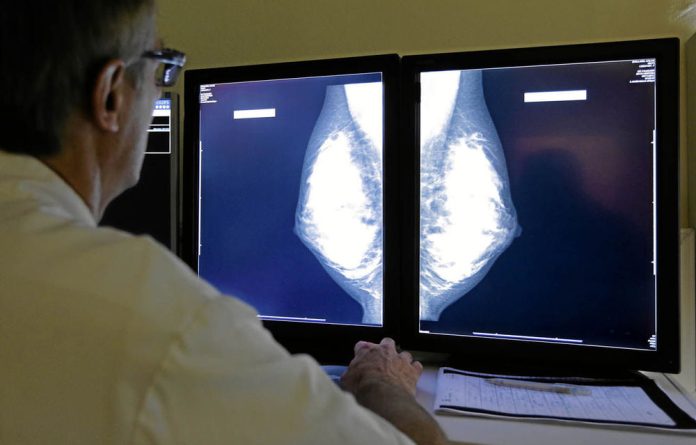When breast cancer is diagnosed, one option that is often is considered is whether to also remove the noncancerous breast, a procedure known as a double mastectomy. A large study of California women investigated whether the procedure increased survival. The findings were published on September 3 in the Journal of the American Medical Association (JAMA) by researchers at the Breast Care Center, Comprehensive Cancer Center, University of Michigan, Ann Arbor.
The study authors note that clinical trials have reported that, compared to a bilateral mastectomy, survival rates are similar for women with early-stage breast cancer treated who undergo breast-conserving surgery and radiation. Despite those studies, however, the performance of a mastectomy, and particularly a bilateral mastectomy, is increasing among women in the United States. The reasons for the increasing use of bilateral mastectomy are unknown; however, one possibility is the use of diagnostic tests such as breast magnetic resonance imaging and genetic testing of BRCA1 and BRCA2 mutations. The researchers noted that these tests might provide a justification for bilateral mastectomy, evidence for a survival benefit is limited to rare patient subgroups, such as women with BRCA1/2 mutations or s strong family history of cancer.
The authors note that a bilateral mastectomy may have medical and psychosocial complications, a better understanding of its use and outcomes is necessary for optimizing cancer care. Therefore, they conducted a study to compare use of and mortality after bilateral mastectomy, breast-conserving therapy with radiation, and unilateral mastectomy.
The study group comprised 189,734 breast cancer patients enrolled in the California Cancer Registry. The women were diagnosed with stages 0-III unilateral breast cancer in California from 1998 through 2011; their average follow-up was 89.1 months. The researchers assessed factors associated with surgery use, as well as overall and breast cancer–specific mortality
The investigators found that from 1998 through 2011, the rate of bilateral mastectomy increased from 2.0% to 12.3%, marking an annual increase of 14.3%. Among women younger than 40 years, the rate increased from 3.6% in 1998 to 33% in 2011. Bilateral mastectomy was more often performed on non-Hispanic white women, women with private insurance, and women who received care at a National Cancer Institute (NCI)–designated cancer center (8.6% among NCI cancer center patients vs. 6.0% among non-NCI cancer center patients). In contrast, a unilateral mastectomy was more often performed on racial/ethnic minorities: Filipina, 52.8%; Hispanic, 45.6%; non-Hispanic white, 35.2%) and those with public/Medicaid insurance (48.4% vs. 36% for women with private insurance.
Compared to breast-conserving surgery with radiation (10-year mortality, 16.8% ), unilateral mastectomy was associated with higher all-cause mortality (10-year mortality, 20.1%). There was no significant mortality difference compared with bilateral mastectomy (10-year mortality, 18.8%).
The authors concluded that the use of bilateral mastectomy increased significantly throughout California from 1998 through 2011; however, the increase was not associated with lower mortality than that achieved with breast-conserving surgery plus radiation. In addition, unilateral mastectomy was associated with higher mortality than were the other two surgical options.















